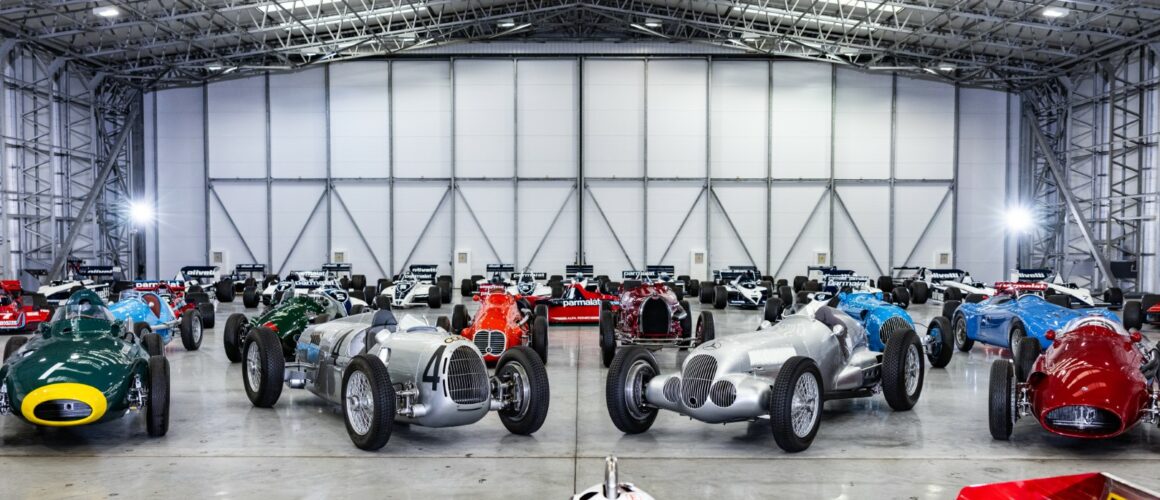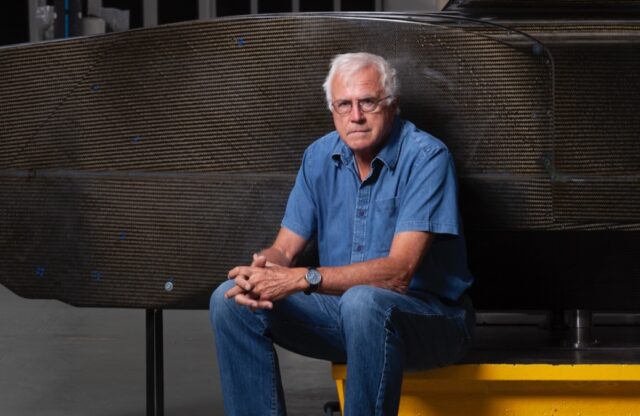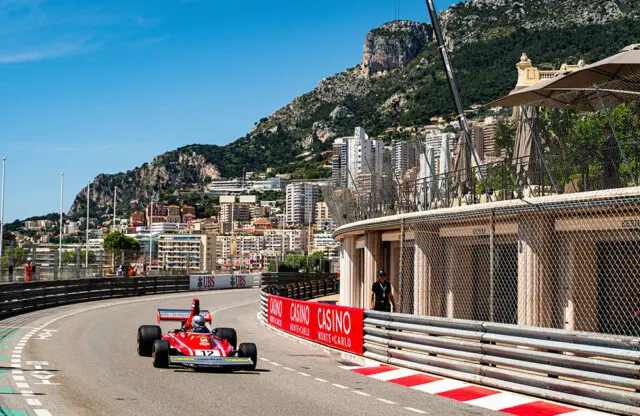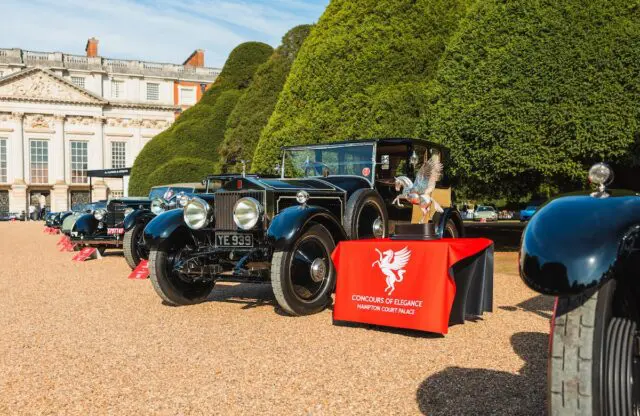Former Formula 1 supremo Bernie Ecclestone has – seemingly for the first time – confronted his own mortality. At the age of 94, the man who helped to build the modern sport as we now know it is preparing for the future by parting with his prized collection of historic Grand Prix and F1 cars.
“I love all of my cars, but the time has come for me to start thinking about what will happen to them should I no longer be here,” Bernie admitted. “After collecting and owning them for so long, I would like to know where they have gone, and not leave them for my wife to deal with should I not be around.”
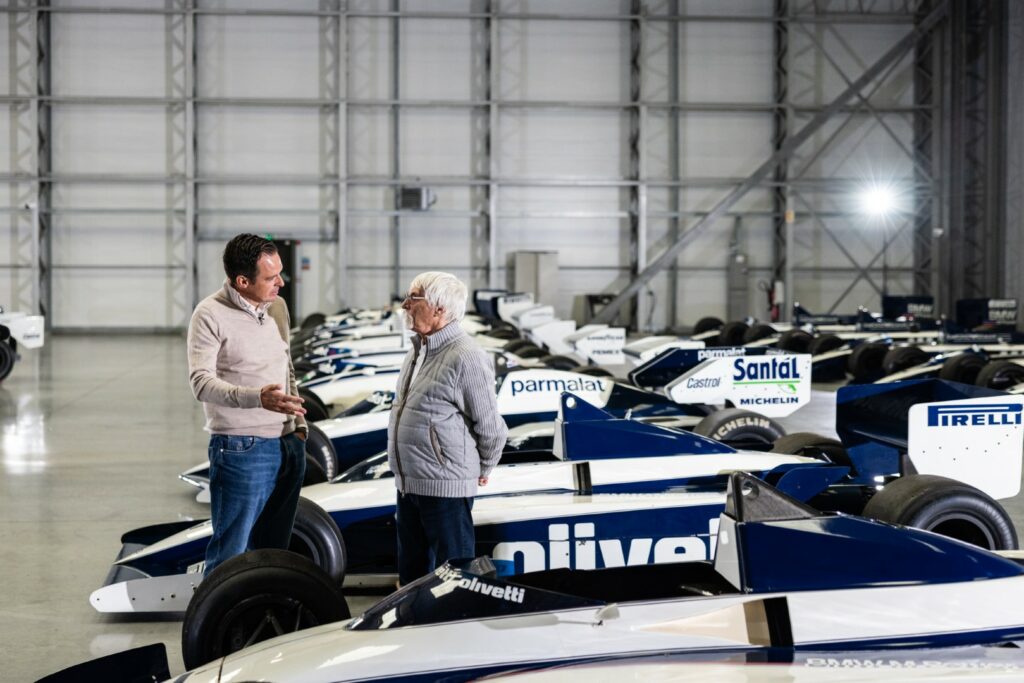
The collection – 69 cars spanning almost 70 years of F1 history – is set to be sold individually by renowned dealer Tom Hartley Jnr. The collection includes everything from a 1931 Bugatti Type 54S to Michael Schumacher’s Ferrari F2002.
Many of these treasured machines – which have a combined value of around £300m – have been largely hidden from the public. Magneto stands as the only publication that has ever been allowed to see these special cars in the metal for David Lillywhite’s award-winning feature for issue 4 back in 2019. Here are some of our personal favourites.
1937 Mercedes-Benz W 125
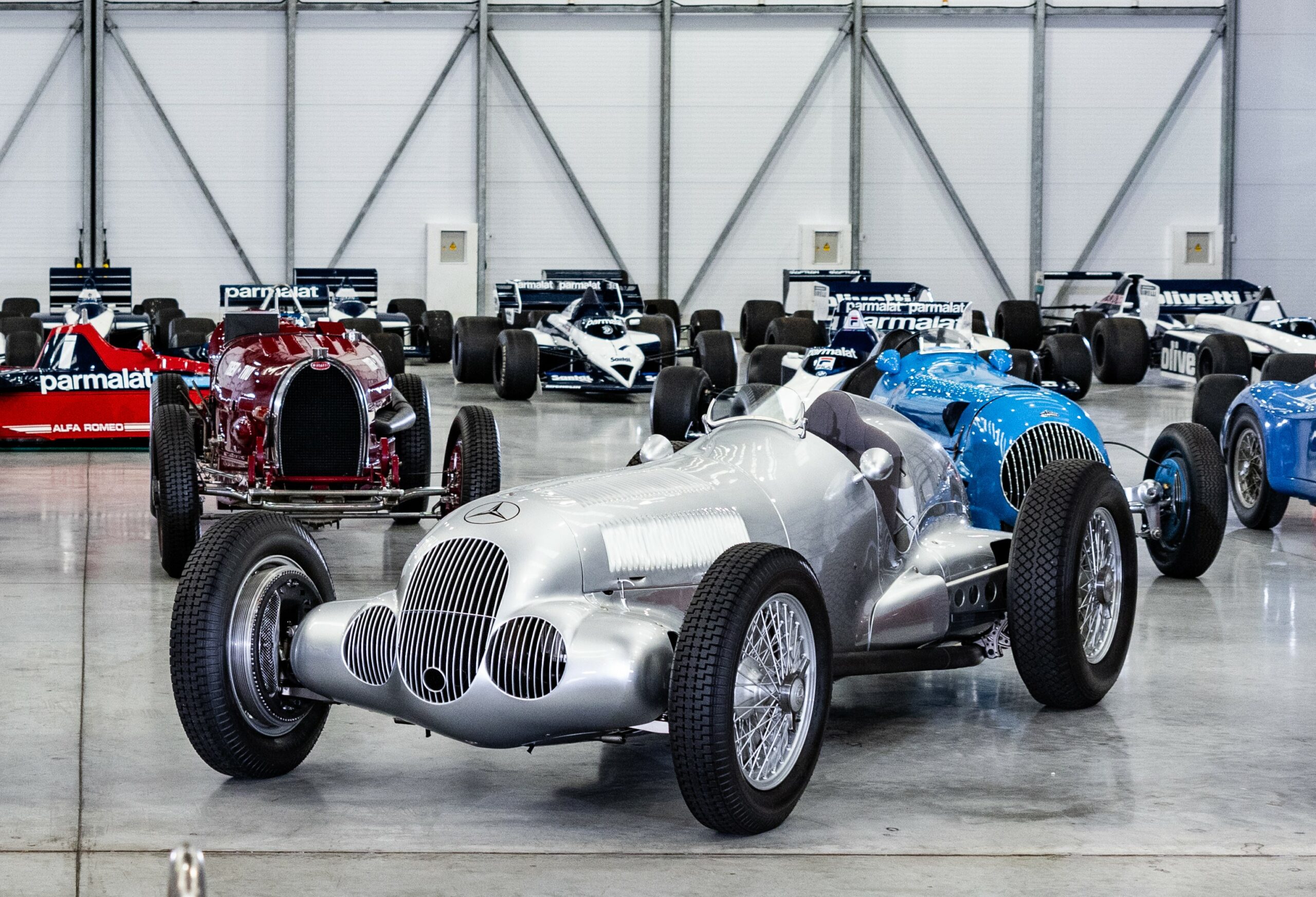
The dominance of the Government-backed Mercedes-Benz and Auto Union Silver Arrows is legendary, and the W 125 was one of the greatest of the breed. Consider that in 1937 its straight-eight engine produced more than 600bhp, yet F1 cars took until the mid-1980s to exceed that figure. Depending on gearing, the W 125 could top 190mph. Bernie’s W 125, chassis 190815, was driven in-period by Rudolf Caracciola, and is the only example in private ownership. It has already been sold.
1937 Auto Union Type C V16
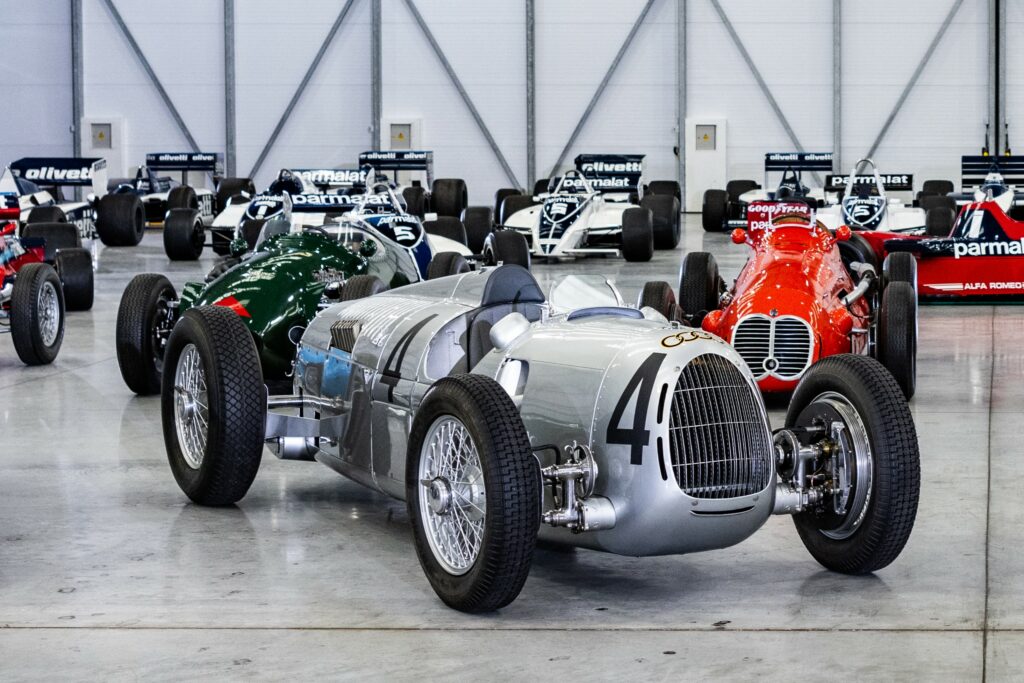
In the 1930s battle between Mercedes-Benz and Auto Union, it was the latter that produced the most technically innovative cars. The 1937 Type C’s 6.0-litre supercharged V16 produced 520bhp and 630lb ft of torque. Nearly all the Auto Unions were lost during the war, but this is a Crosthwaite & Gardiner recreation, officially sanctioned by Audi.
1951 Ferrari 375
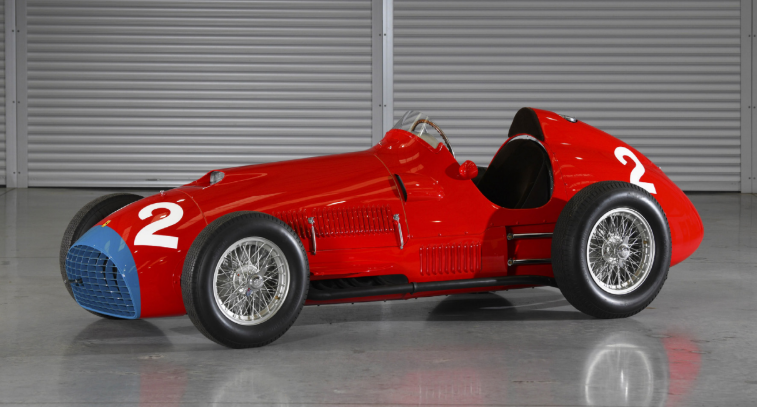
Ferrari’s early Formula 1 efforts were with the 1.5-litre supercharged 125 F1, but after disappointing results Enzo Ferrari decided to switch to the naturally aspirated 4.5-litre formula for the 1950 season. Development came in stages, from a 3.3- to 4.1-litre and then this 4.5-litre 375 F1 in time for Monza, where Alberto Ascari finished second. This remarkable car also delivered Ferrari’s first-ever Formula 1 victory at the British Grand Prix in 1951.
1955 Connaught Type B
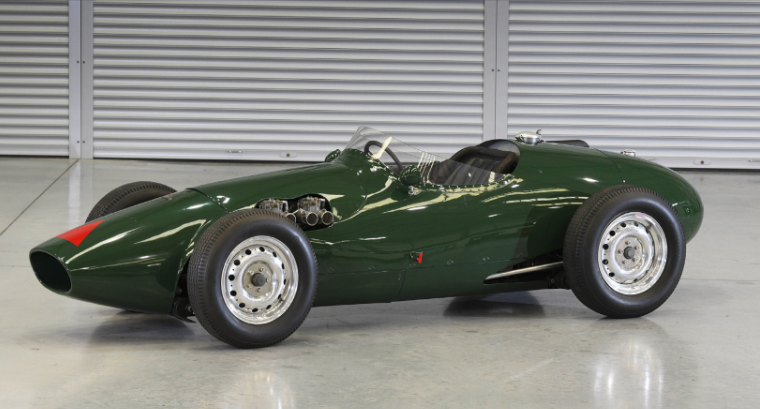
In 1955, Tony Brooks made history by winning the Syracuse Grand Prix in the Connaught B1, becoming the first Briton to triumph in a British car since 1924. Built by ex-RAF pilots Rodney Clarke and Michael Oliver, Connaught cars began in Formula 2 but transitioned to Formula 1 with the Type B, powered by an underpowered Alta engine. When Connaught was in financial trouble, Bernie Ecclestone stepped in and acquired the car for driver Stuart Lewis-Evans. He also attempted to qualify it himself at Monaco in 1958, narrowly missing the grid. This car marked the start of Bernie’s F1 career, leading to his control of the sport by 1978.
1958 Vanwall VW10

Bernie’s favourite car, chassis VW10; driven by Tony Brooks and Sir Stirling Moss, and one of the cars to win Vanwall the inaugural FIA F1 Constructors’ World Championship in 1958. “I spent many weekends with the team. Stuart Lewis-Evans, Moss and Brooks were the drivers, and good friends – particularly Lewis-Evans, with whom I used to travel a lot,” Bernie told Magneto in 2019.
1965 Ferrari 312
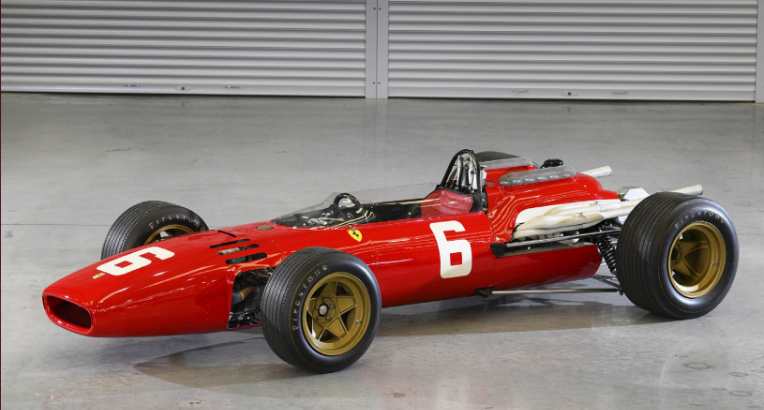
The Ferrari 312 F1-66 marked the start of Ferrari’s 12-cylinder tradition, and played a pivotal role in F1’s 3.0-litre era. Powered by a 3.0 V12 derived from Ferrari’s Le Mans prototypes, the car delivered 360bhp and featured a distinctive semi-monocoque chassis to house large fuel tanks. This specific chassis, 0010, was driven by John Surtees to victories at the Syracuse and Belgian Grands Prix in 1966. The latter, in heavy rain, was immortalised in the movie Grand Prix (1966). Despite early success, tensions led to Surtees’ departure, impacting Ferrari’s championship hopes. The car was later raced by Lorenzo Bandini, Ludovico Scarfiotti and Mike Parkes, but saw diminished success, making way for the 312 B in 1970.
1977 Ferrari 312 T2
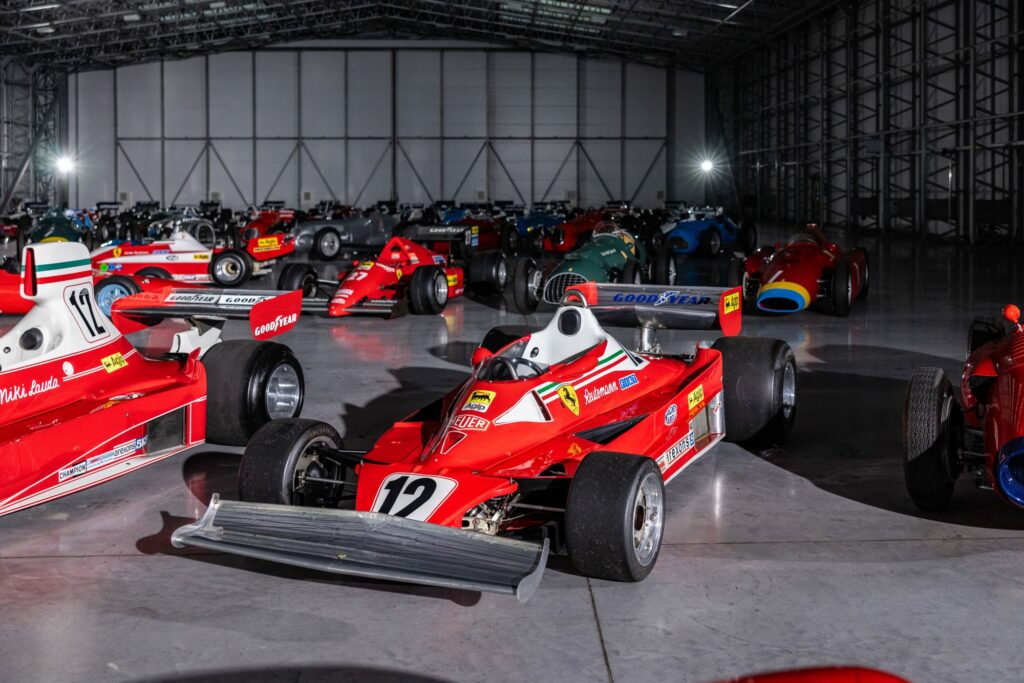
The Ferrari 312 T2 holds a special place in both F1 history and Bernie Ecclestone’s collection, because it was the car in which Niki Lauda won his second Drivers’ World Championship in 1977 – just one year removed from his near-fatal accident. This particular chassis, 029, claimed five victories with Lauda in ’77, and was also driven to victory in Brazil by Carlos Reutemann. Developed by Mauro Forghieri, the 312 T2 featured a transversely mounted gearbox and Ferrari’s legendary 3.0-litre flat-12 engine, offering exceptional power and handling. The combination of Lauda’s precision and the T2’s speed were enough to seal both Championships.
1978 Alfa Romeo Brabham BT46B ‘fan car’
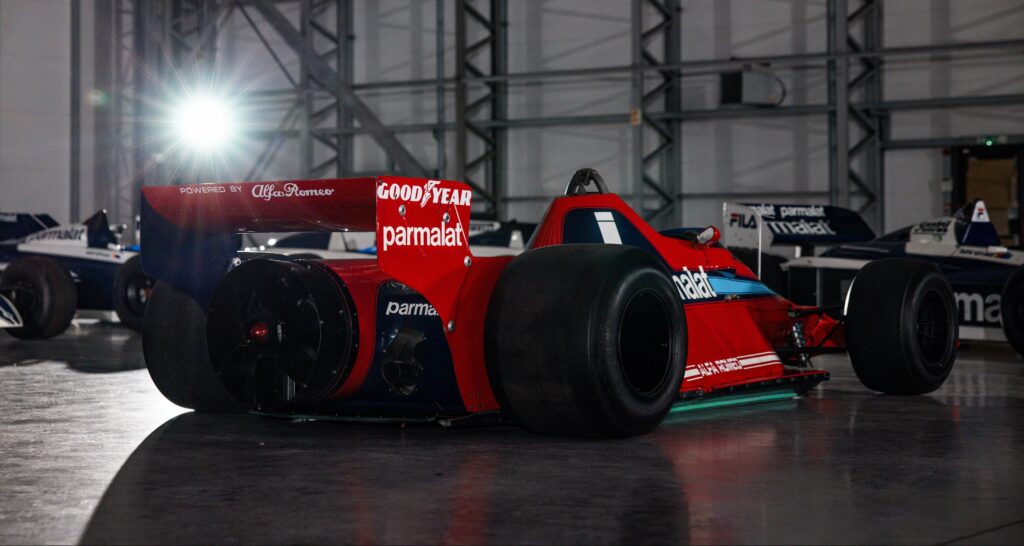
The legendary ‘fan car’. “First time out it won the race,” Bernie told us in 2019. “It caused so much trouble that I decided to withdraw it to stop everyone else from having to build the same sort of car. It bothered Gordon [Murray] and the rest of the team, but not me. That car was so quick it could drive up the wall, and sooner or later someone was going to get hurt.” Magneto contributor and the former manager of Bernie’s collection, Robert Dean, discovered just how fast the BT46B is when he drove it up the Hill at the Goodwood Festival of Speed. You can read about that here.
1983 Brabham BT52
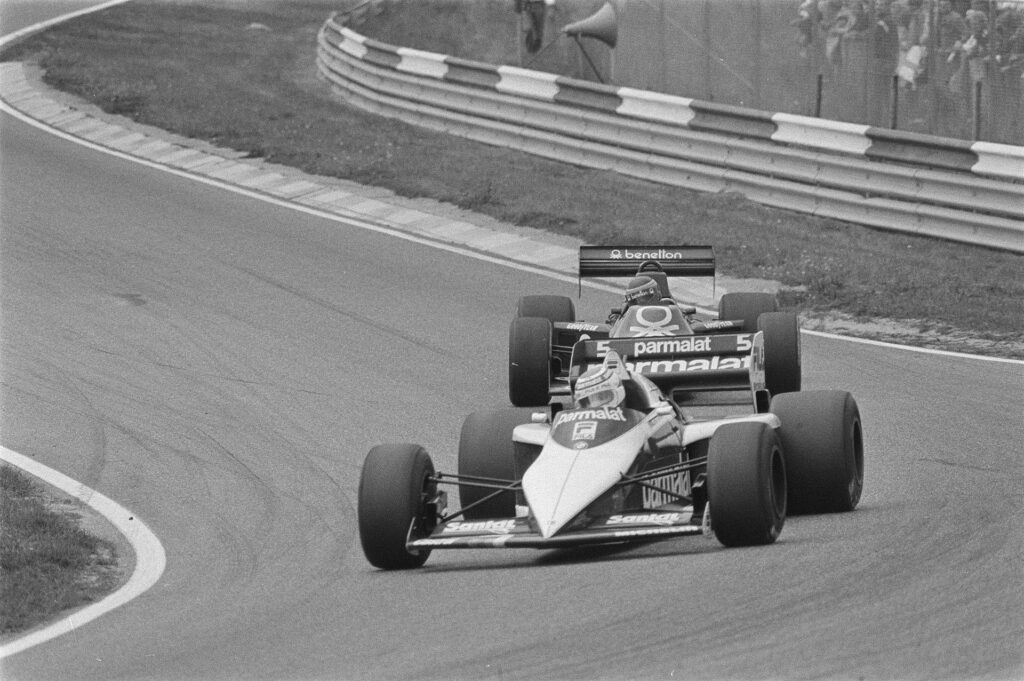
Bernie Ecclestone’s 18-year stint at the helm of the Brabham team revolutionised F1 with the professionalism and engineering innovation that is synonymous with the teams of today. The pinnacle of this success was the BT52, which was the first turbocharged car to win the Championship. Key to the BMW-powered car’s success was designer Gordon Murray, whom Bernie retained against the advice of engineer Ron Tauranac. Bernie’s example, chassis BT52-04, was driven by Riccardo Patrese and Nelson Piquet, and won four Grands Prix in 1983.
2002 Ferrari F2002
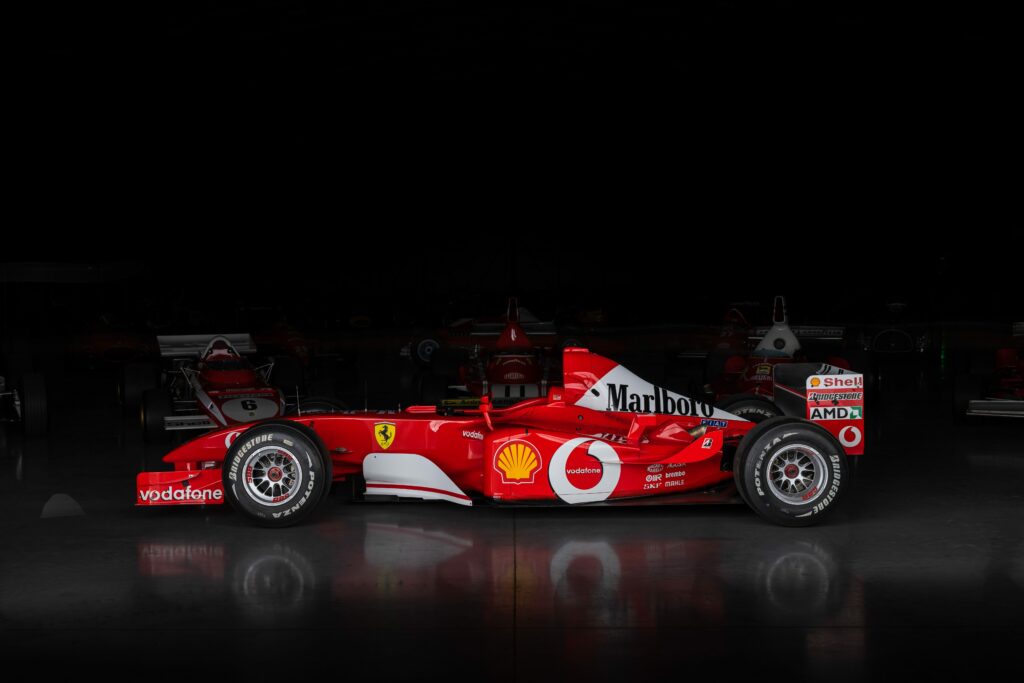
One of the most successful F1 cars of all time, winning 15 of 17 Grands Prix in 2002. Bernie’s car is chassis LF1, which was driven by Michael Schumacher and Rubens Barrichello. “I remember how enthusiastic Michael was after three laps – believe me, just three laps – on a very cold day at the Fiorano test track; January 2002,” recalled Luca di Montezemolo. “It was so easy to drive.”
Ex-Schumacher cars have seen a dramatic increase in value over the past ten years. Another of the German’s Championship-winning Ferraris, an F2003-GA, sold for a record-breaking $14.9m in 2022.

